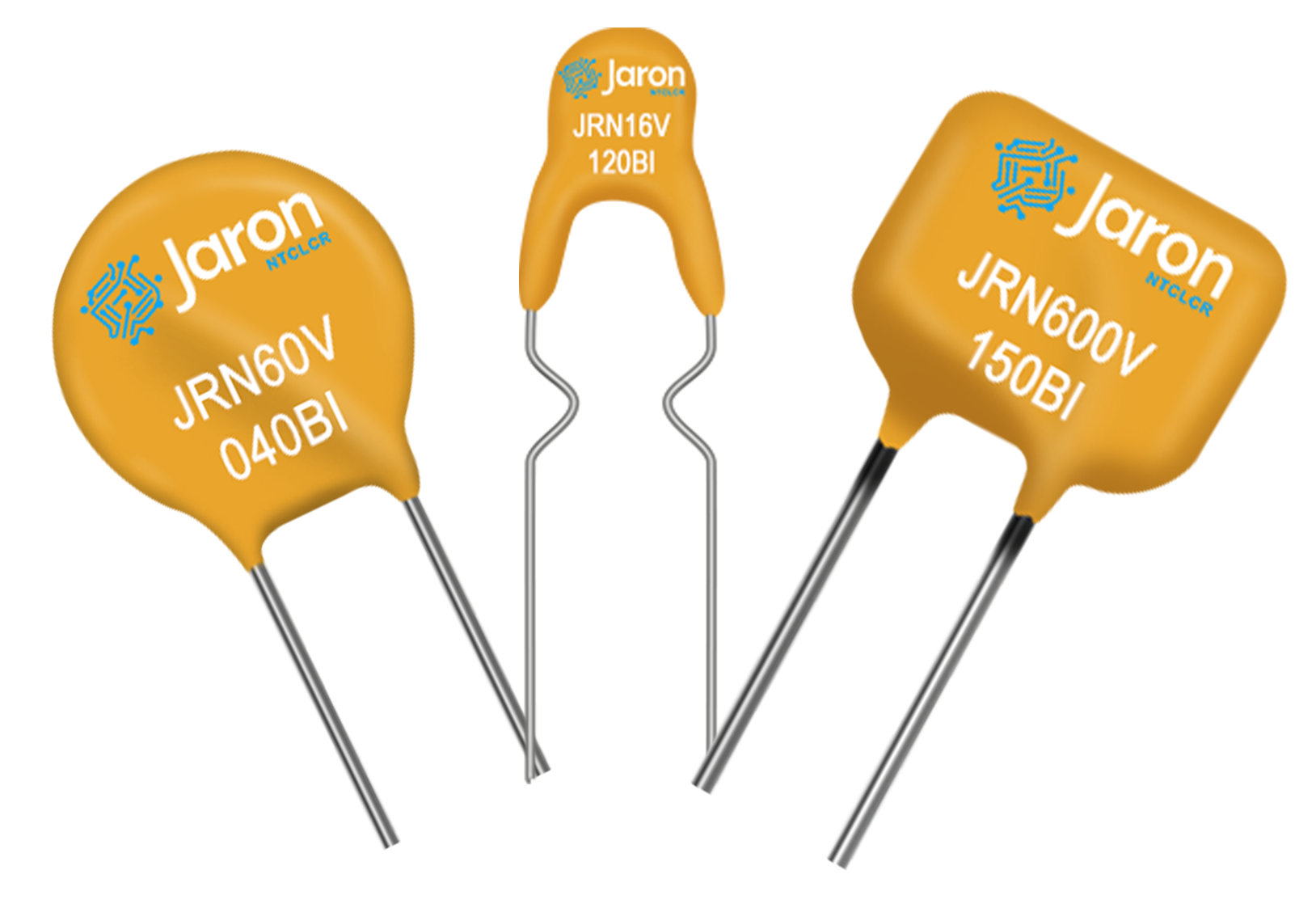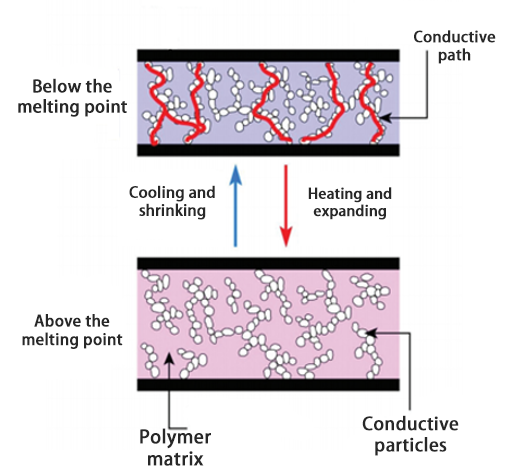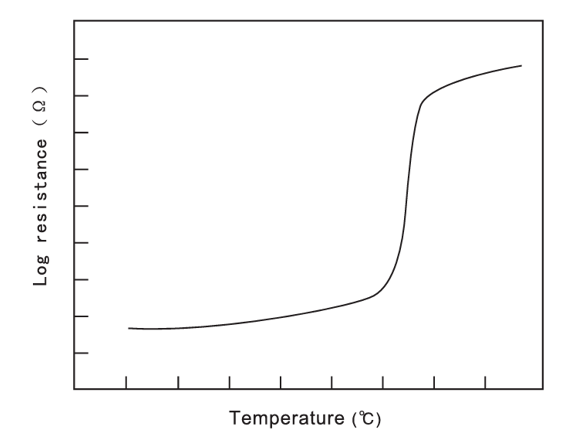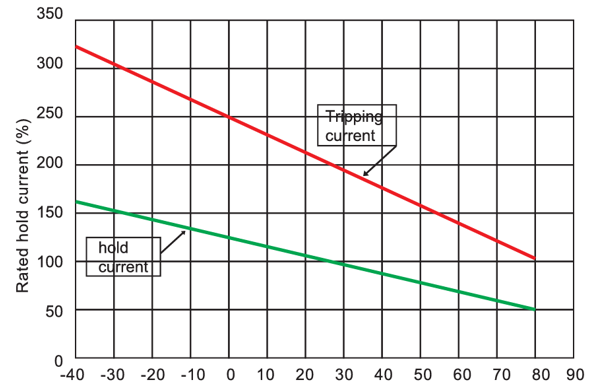Discover the working principle, features, and application advantages of PPTC resettable fuses. Offering automatic current limiting, resettable function, fast response, and thermal locking, PPTC fuses are widely used in communications, power supplies, automotive electronics, and smart home systems. A reliable and reusable overcurrent protection solution.

1. Basic Principle
PPTC resettable fuse (Polymeric Positive Temperature Coefficient Resettable Fuse) is a current-limiting overcurrent protection device made of semi-crystalline polymer mixed with conductive particles (such as carbon black).Its core characteristic is that the resistance increases rapidly as the temperature rises, with the ability of "automatic current limiting and automatic reset", widely used in communications, consumer electronics, automotive circuits, and other fields.
Under normal operating conditions, the PPTC has very low resistance, the heat generated by the circuit current is minimal, the polymer is in a thermal equilibrium state, the conductive particles remain well connected, and current can pass through normally.
When overcurrent occurs, the PPTC heats up due to I²R power loss, the accumulated heat exceeds its dissipation capability, causing the polymer base material to expand, the conductive particles to separate, resulting in a high-resistance state that limits current to protect the circuit.At this time, only a small amount of current remains to maintain the high-resistance temperature, preventing a vicious cycle caused by fault recovery.
After the power is turned off and the fault is completely removed, the device cools down, the polymer shrinks, the conductive path is re-established, and the resistance returns to its initial value, allowing the device to be reused.This cycle can be repeated many times, demonstrating good reusability.
Note: The typical trip temperature of PPTC is about 125°C, but the specific value varies depending on the model.

2. Product Features
Overcurrent protection: When overcurrent or short circuit occurs, the PPTC quickly switches from a low-resistance state to a high-resistance state, suppressing current rise and preventing damage to the load or circuit.
Automatic reset: After the fault is cleared and the power is turned off, the PPTC cools down and recovers automatically without replacement, reducing maintenance cost.
Self-locking (non-cyclic) operation: After triggering, the PPTC enters a high-resistance state. Even if the power remains on, the small current maintains the internal temperature, locking the high-resistance state, thereby avoiding the repeated on-off cycle of faulty devices.
High surge current endurance: Some industrial-grade models can withstand surge currents up to 100A, suitable for load applications with high inrush current.
Lightning protection: PPTC has lightning protection capability and can be used in systems that limit current to low levels without losing functionality due to transient lightning surges, often used in combination with devices like TVS and MOV for secondary protection on sensitive circuits such as power and communication interfaces.
Fast response:Compared with traditional fuses or ceramic PTCs, PPTC responds quickly, making it especially suitable for applications with high requirements on power-off response time.

3. Effect of Ambient Temperature on Performance
The following chart shows the relationship between hold current and trip current of the resettable fuse versus temperature.Since the resettable fuse is made of thermosensitive materials, changes in ambient temperature will inevitably affect its performance.
When the ambient temperature around the resettable fuse increases, the energy required to trigger it decreases, thus the hold current decreases.
As shown in the figure, the relationship curves of HOLD and TRIP with ambient temperature have a negative slope.At 25℃, 100% of the current in the line passes through the resettable fuse.
If the ambient temperature is higher or lower than this value, the non-tripping current and tripping current of the component will increase or decrease accordingly.

4.Comparison with Other Overcurrent Protection Devices
|
Device Type |
Reusable |
Auto Reset |
Power-Off Response Speed |
Safety |
Size |
|
PPTC |
√ |
√ |
Fast |
High (Thermal Locking) |
Small |
|
Traditional Fuse |
× | × |
Fast |
High |
Medium |
|
Bimetal Circuit Breaker |
√ | √ |
Slow |
Low (May Misreset) |
Large |
|
Ceramic PTC |
√ | √ |
Moderate |
Moderate |
Large |
Compared with ceramic PTCs, PPTC features smaller size, faster response, and lower resistance, making it more suitable for space-constrained and response-time-sensitive electronic products.
5. Summarize
With its automatic current limiting, reusability, fast response, and excellent thermal locking characteristics, the PPTC resettable fuse has become a widely used intelligent overcurrent protection solution in modern electronic circuits.
It effectively compensates for the shortcomings of traditional one-time fuses and mechanical protection devices in response speed, service life, and maintenance convenience,and is particularly suitable for applications with high reliability and safety requirements, such as communications, power supplies, automotive electronics, and smart homes.
Through proper selection and thermal compensation design, PPTC can provide a stable and long-lasting protection mechanism for circuits,making it one of the key components in achieving intelligent protection.